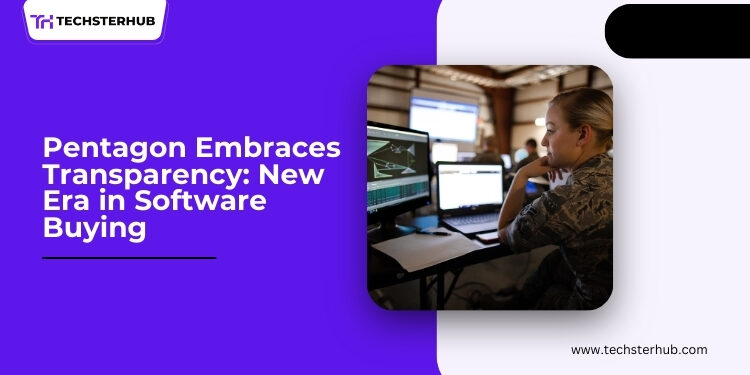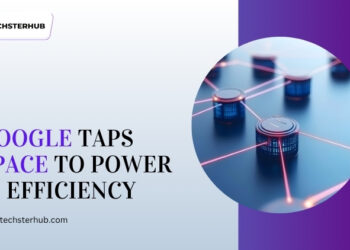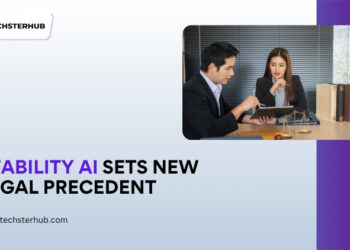The Pentagon has revealed modifications to its software procurement system that will enable enhanced accessibility and more adaptable technology acquisitions. The U.S. Department of Defense (DoD) has undergone a substantial change in its approach to buying and managing software. Experts predict that the new strategy will have extensive implications for how advanced military software is developed and utilized. This article examines the meaning of the new process for the Pentagon’s software acquisition and analyzes its impact on purchase practices while emphasizing its significance within the current technological environment.
What is the Pentagon’s Software Buying Process?
As the United States’ main military authority, the Pentagon has traditionally managed the acquisition of supporting software and technologies. Software systems employed by the Pentagon span basic administrative tools and extend to sophisticated technologies for military operations and cybersecurity analysis.
The Pentagon’s software acquisition process has historically been slow-moving and burdened by complexity and excessive bureaucracy. The DoD demands lengthy approval procedures and comprehensive documentation alongside intensive examination during new software acquisitions. These measures aim to enable the use of secure and reliable software but frequently result in operational delays and inefficiencies.
The updated changes serve to simplify this procedure while expanding access to modern, advanced software technologies which military operations can rapidly employ. The Pentagon aims to simplify the software submission process for developers while speeding up the deployment of military software solutions.
Why is the Pentagon Changing Its Software Buying Process?
Multiple essential factors drove Pentagon’s move to create a software purchasing system that is more transparent and accessible.
- Faster Technological Advancement: The Pentagon must adapt to advancements in software technology to preserve its military superiority as technological innovation continues to accelerate. The Department of Defense can rapidly implement new technological solutions like artificial intelligence (AI), cybersecurity systems and data analytics platforms through a streamlined software purchasing process that eliminates bureaucratic delays.
- Adapting to Modern Needs: The way the Pentagon operates is changing. Current military operations depend more and more on software systems to handle logistics operations and data processing as well as mission execution. Continuous updates and refinements of these software solutions mean that the DoD must shift towards more adaptable software acquisition methods.
- Encouraging Innovation: Simplification of the acquisition process at the Pentagon should stimulate fresh technological advancements within the defense sector. The objective is to enable software developers from smaller companies and start-ups to offer their technology solutions to military operations. A more competitive market for defense software tools emerges which promises to deliver improved effectiveness for military applications.
- Improving Security: A more user-friendly software acquisition procedure has the unexpected benefit of strengthening security. The Pentagon will benefit from increased collaboration and testing of software from developers to maintain high security standards. The Pentagon has the ability to swiftly substitute obsolete or insecure systems with advanced and more protected alternatives.
How Will the New Process Work?
The Pentagon plans to implement multiple significant modifications to its software procurement strategy. The upcoming updates will concentrate on accelerating the process while also enhancing efficiency and adaptability. Some of the key elements include:
- Simplified Approval Process: The approval process for new software used to require an extensive amount of time and involved complex procedures. The revised procedure will focus on streamlining operations to decrease evaluation and approval times for new software solutions. The Pentagon aims to expedite software product reviews and establish clearer development guidelines to simplify the process for developers to deliver their solutions to Pentagon customers.
- Greater Access for Smaller Companies: The most important development is the expanded opportunities available to smaller tech companies and start-ups. Only big defense contractors with enough resources to manage the complicated approval process could sell software to the Pentagon in the past. The revised strategy provides small businesses with additional chances to display their creative products and solutions. Military software applications will become more varied and innovative through this approach.
- Flexible Contracts and Licensing: The Pentagon has initiated a move towards adopting more adaptable contractual agreements alongside new licensing frameworks. The military will benefit from the ability to purchase software through subscription services which enables easier adoption of new technologies and scalability. The Pentagon will maintain its technological edge by utilizing flexible contracts that prevent commitments to obsolete or inefficient agreements.
- Use of Cloud and Open-Source Software: The military’s move towards greater flexibility now includes a larger implementation of cloud-based solutions together with open-source software applications. Cloud computing delivers multiple benefits such as rapid service scaling capabilities and better collaborative opportunities. Open-source software enables the Pentagon to utilize multiple tools and gain advantages from community-driven enhancements and expertise.
What Does This Mean for Software Developers?
This development represents a revolutionary shift for software developers. The new engagement process with the Pentagon opens up opportunities for developers to earn major defense contracts that will amplify their business growth. Smaller firms that develop innovative software now have chances to make important contributions to defense technology.
In order to qualify their software for military use, developers must achieve stringent security and performance requirements. The move to a more open and accessible system enables developers to clearly understand their route to partnering with the DoD and provides them with opportunities to test their software in actual military environments.
Benefits of the New Process:
The newly implemented software acquisition process delivers numerous advantages for both the Pentagon and technology sector.
- Increased Speed and Efficiency: The Pentagon benefits immediately from faster acquisition and deployment of new software. The military will achieve faster responses to new threats and challenges with this system.
- Cost Savings: The Pentagon has potential to lower software acquisition expenses through the implementation of a flexible and competitive procurement system. Opening up competition between more companies allows the DoD to secure better pricing and prevent software solution overpayment.
- Improved Software Quality: The Pentagon could achieve better software outcomes by attracting more diverse developers to its procurement activities. Access to new technologies and increased competition will provide the Pentagon with expanded options for advanced software solutions.
- Fostering Innovation: The Pentagon facilitates innovation by providing smaller companies entry to the defense market. By introducing new concepts and advanced technologies these companies have the potential to enhance military operations resulting in improved results for the U.S. military.
Challenges and Considerations:
The updates to software procurement practices offer potential benefits but introduce several obstacles. Meeting necessary security and reliability standards for software will remain an important priority. The Pentagon needs to maintain a balance between quick procurement and detailed evaluation to prevent compromising its quality and security standards.
Conclusion
The Pentagon’s move to create a more accessible and flexible software procurement system represents a vital phase in advancing the U.S. military’s technological infrastructure. The DoD has positioned itself to benefit from cutting-edge software and technological advances by simplifying the process for small companies and developers to contribute. The military will stay nimble and competitive while effectively responding to new digital-era challenges through this strategic shift.
The emergence of this new process will transform military technology through increased collaboration and innovation leading to quicker deployment of new solutions. Developers now have the chance to support national defense and expand their business operations within a rapidly evolving marketplace.











